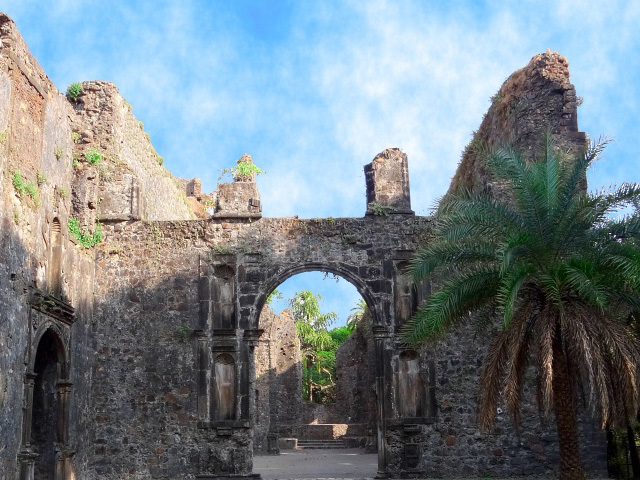Vasai Fort

Vasai, also called Bassein, lies about 48 kms north of Mumbai just across the Ulhas River. The Vasai fort in the old city was the headquarter of the Portuguese in the north, next in importance to Goa. The coastal land-fort of Vasai was surrounded by sea on three sides and to the landside it had a moat which was filled by sea-water. Its 4.5kms long strong stone wall had 11 bastions. The fort had two gates – the westward land-gate. There was also a small citadel in the fort. Well – equipped with water-tanks, store-houses, armoury, etc., the fort also had fields for growing grains and vegetables. All the old structures inside the wall are now in ruins.
Vasai came into prominence when the ancient harbour of Sopara (now Nalsopara village, 10kms north of Vasai) became unfit for use. However, Vasai continued to be a trading centre. A small fort-like structure was erected here in 1533 AD by Malik Tughan, the commander of Bahadur Shah, Sultan of Gujarat. In 1534 AD, the Portuguese forced Bahadur Shah to cede Vasai in perpetuity. Here, first they constructed the citadel (Balekilla), and then in 1590AD, the present fort with its ramparts and other structures came into being. For the next about 150 years Vasai enjoyed opulence and prosperity. The Portuguese built here magnificent houses, convents, churches and an orphanage. Only the Hidalgos (Portuguese nobles) were allowed to reside within the fort walls. Vasai fort was the main naval base and sort of ship-building centre of the Portuguese. The end came in 1739AD, when Chimaji Appa, Peshwa Bajirav’s brother, stormed the fort and captured it with great loss of life. It was here in 1802 AD, the Peshwa Bajirav II signed the infamous “Treaty of Bassein” which virtually dissolved the Maratha Confederacy. Finally, the fort and the city of Vasai was ceded to the British in 1817 AD.

